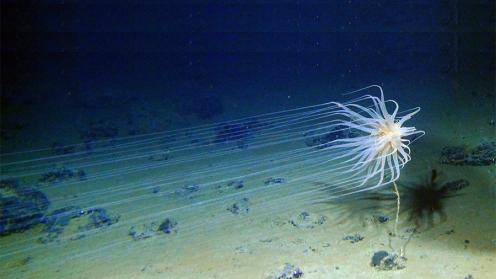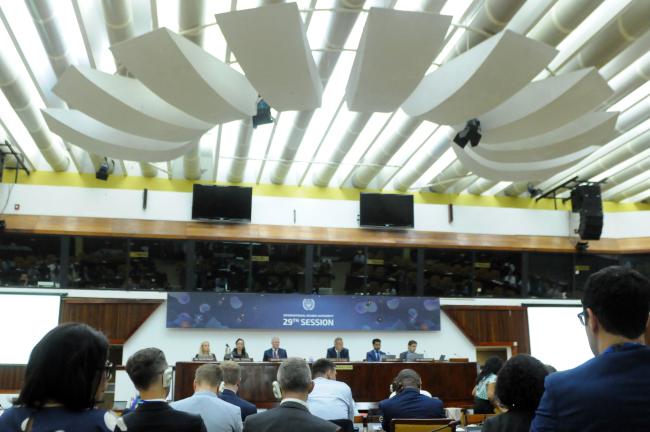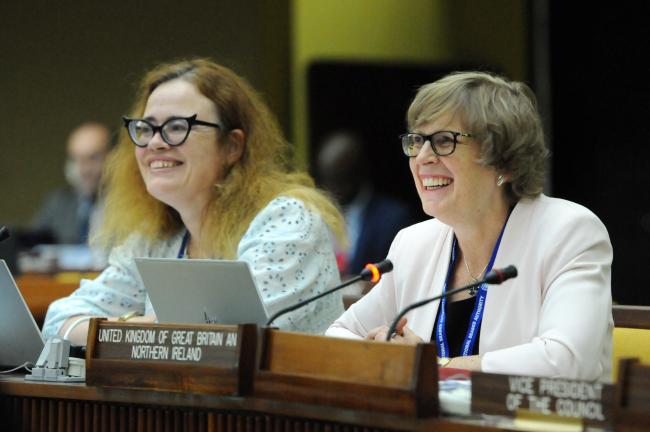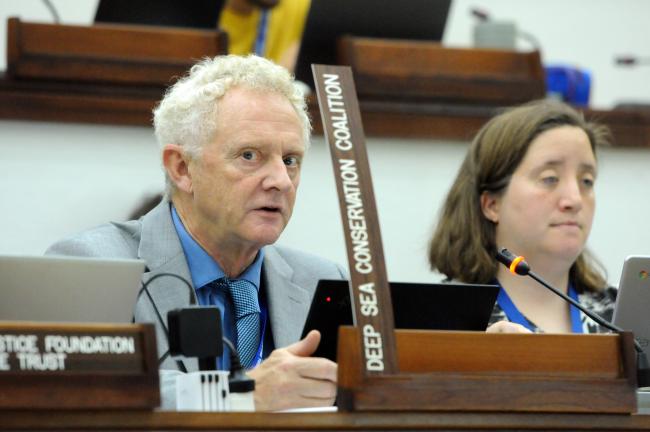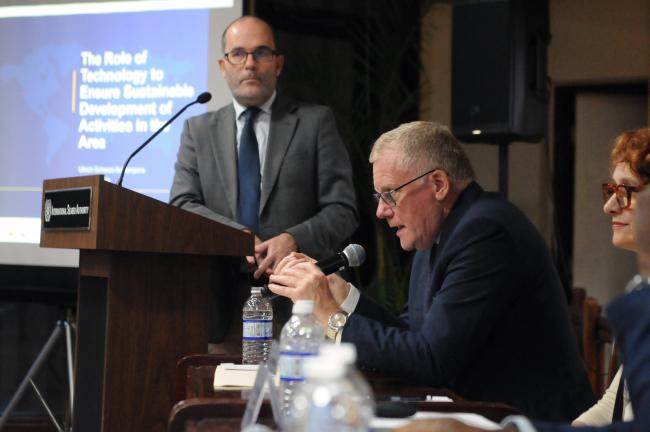Deliberating and reaching consensus on the consolidated text containing the draft exploitation regulations for commercial deep-sea mining is currently the main task of the Council of the International Seabed Authority (ISA). The regulations cover all exploitation mining activities in the Area (the seabed and ocean floor and the subsoil thereof, beyond the limits of national jurisdiction), including environmental, financial, cultural, and technical aspects. Delegates devoted the entire day to negotiating regulations over a broad spectrum of issues, ranging from the protection of the marine environment to anti-corruption provisions.
Council President Olav Myklebust (Norway) guided delegates in two informal sessions in the morning and afternoon, which addressed:
- prevention of corruption (regulation 40);
- other resource categories (regulation 41);
- restrictions on advertisements, prospectuses, and other notices (regulation 42);
- compliance with other laws and regulations (regulation 43);
- general obligations (regulation 44);
- regional environmental management plans (REMPs, regulation 44 bis);
- strategic environmental goals and objectives (regulation 44 ter); and
- the development of environmental standards and guidelines (regulation 45).
Delegates were united in acknowledging the importance of corruption prevention. They discussed: expanding the regulation to encompass acts of bribery or corruption, threats, and blackmail; explicitly outlining consequences of failure to comply; whether to include references to the Organisation for Economic Co-operation and Development (OECD); and whether contractors and relevant parties shall adhere to regional, national, and international laws related to anti-corruption and anti-bribery.
An interesting discussion took place under the regulation on restrictions on advertisements aiming to ensure that all public communications are factual, transparent, and do not mislead stakeholders or the public regarding ISA’s decision making. Some delegates queried whether the draft exploitation regulations apply to all three types of mineral resources (polymetallic nodules, polymetallic sulphides, and cobalt-rich ferromanganese crusts) or just to nodules.
President Myklebust clarified that while the discussions on the financial terms of a contract prioritized nodules, the consolidated text does not differentiate between the various types of mineral resources.
Along the same lines, regarding resources other than the resource category to which the exploitation contract relates, many delegates stressed that the contractor shall make a separate application for them and discussed the content of relevant notifications.
On general obligations regarding the protection and preservation of the marine environment, delegates engaged in a lengthy discussion on:
- who should take the necessary measures;
- the inclusion of a reference to direct and indirect harmful effects;
- whether to refer to the precautionary approach or principle, as well as to the polluter pays approach or principle;
- the inclusion of a reference to traditional knowledge of Indigenous Peoples and local communities; and
- the applicability of the mitigation hierarchy.
Observers pointed out that the draft regulation does not refer to ensuring the protection of biodiversity and that the mitigation hierarchy is not currently applicable to deep-sea mining activities.
On REMPs, many delegates emphasized that the Legal and Technical Commission (LTC) shall only consider an application for a plan of work for exploitation if a REMP has been adopted for the particular area and type of resource concerned. Some underscored that not all areas have approved REMPs, stressing that all contractors should be on an equal footing.
Regarding strategic environmental goals and objectives, the discussion focused on whether such overarching goals should be included in the draft exploitation regulations or addressed in a general policy document. Many suggested revisiting the draft regulation following the discussion on a general environmental policy for the ISA to be held in the ISA Assembly following the conclusion of this Council session.
On the development of environmental standards and guidelines, delegates discussed the need to include: chemicals, waste, and discharge from production; the re-sedimentation rate of disturbed sediment on the seafloor; greenhouse gas emissions; consideration of vibrations, noise, and light pollution; and a periodic review of the approved standards and guidelines.
Delegates also supported provisions for public stakeholder input on the development of standards and guidelines, in addition to the need for an independent scientific review of the standards and guidelines once developed.
In the evening, a side event organized by the ISA Secretariat focused on the importance of technology to ensuring the sustainable use of resources in the Area.
To receive free coverage of global environmental events delivered to your inbox, subscribe to the ENB Update newsletter.
All ENB photos are free to use with attribution. For the 2nd Part of the 29th Annual Session of the ISA, please use: Photo by IISD/ENB - Diego Noguera
